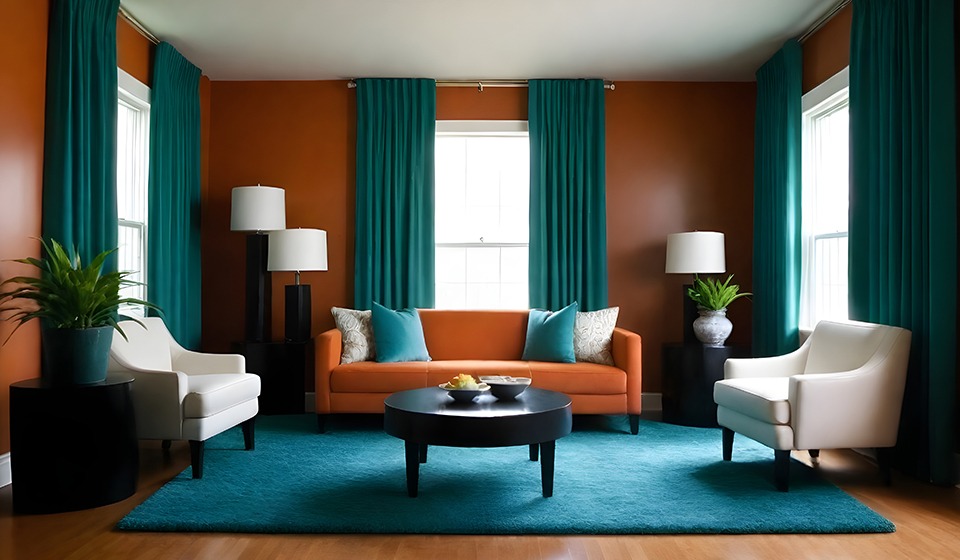Introduction
Art Deco is one of the most iconic and influential design movements of the 20th century. Emerging in the 1920s and flourishing through the 30s and 40s, this bold and glamorous style left an indelible mark on the worlds of architecture, interior design, fashion, and the decorative arts. While Art Deco is often associated with the glitz and opulence of the Jazz Age, it was also characterised by a sleek, geometric aesthetic that reflected the growing modernist sensibilities of the era.
In the world of interior design, Art Deco’s impact is particularly noticeable. By blending sumptuous materials and lavish ornamentation with clean lines and symmetrical forms, Art Deco interiors provide both a luxurious and streamlined vibe. In this guest post, we’ll explore the key elements and characteristics that define the Art Deco interior design aesthetic, as well as how designers can incorporate this iconic style into their own projects.
Elements and Characteristics that Define Art Deco Interior Design
The Art Deco’s interior design has several distinctive visual elements that set it apart from other design movements. The style primarily focuses on geometric shapes and designs. Moreover, straight lines, chevrons, zigzags, and angular motifs feature prominently in Art Deco architecture and decor, often creating a sense of dynamism and visual interest.
Like aesthetics and patterns, rich and luxurious materials are equally important in Art Deco interiors. Glossy, lacquered finishes, shimmering metallic accents, and lush fabrics like velvet and satin were all defining features of the style. Designers often employ these luxurious elements in bold, eye-catching combinations – for example, pairing sleek chrome furniture with plush mohair upholstery or adorning walls with shimmering mirrored panels.
Use of Colour: Enhance With Velvet
Colour was an essential component of the Art Deco style, so designers often used bold, saturated hues to create a sense of drama and opulence. However, it’s important to note that these vibrant colours were typically balanced with more neutral tones, such as blacks, whites, and metallic accents.
One way to achieve this refined, balanced colour palette in an Art Deco-inspired interior is to pair bold, primary colours with the sumptuous texture of velvet. For example, a deep, jewel-toned velvet sofa or armchair can serve as a dramatic focal point. At the same time, they use a more muted colour scheme of blacks, greys, and metallic finishes in other furnishings and accessories
Incorporate Accessories and Lighting into Your Designs
Accessories and lighting are crucial elements in any Art Deco-inspired interior. Decorative objects like mirrored vases, chrome-plated figurines, and geometric wall sconces can help to reinforce the style that emphasises glamour and geometric forms. Similarly, dramatic pendant lights and chandeliers with angular, streamlined silhouettes can serve as visual points, drawing the eye upward and creating a sense of grandeur.
When selecting accessories and lighting, it’s important to keep the overall design cohesive by choosing pieces that complement the room’s colour scheme and architectural details. Mixing and matching different Art Deco-inspired elements can create a layered, visually interesting space that truly captures the spirit of the era.
Invest in Bold Style Furnishings
Perhaps one of the most defining characteristics of Art Deco interior design is using bold, statement-making furnishings. From sleek, angular sofas and chairs to opulent, geometric-patterned floor rugs, the furnishings in an Art Deco-inspired space are meant to command attention and set the tone for the entire room.
When selecting furniture and other large-scale pieces, choose items that reflect the style while emphasising luxury and refinement. Look for pieces that feature glossy, lacquered finishes, metallic accents, and geometric forms. Incorporate plush, velvet upholstery to add to the room’s sumptuous feel.
Conclusion
Art Deco interior design is a timeless and endlessly versatile style that continues to captivate designers and homeowners alike. By embracing the style’s key elements – geometric forms, luxurious materials, bold colours, and statement-making furnishings – you can create interiors that feel both glamorous and modern, evoking the excitement and opulence of the Jazz Age. Whether you’re renovating a classic Art Deco-era building or simply looking to infuse your contemporary space with a touch of vintage flair, the principles of this iconic design movement can help you craft truly unforgettable interiors.
